Consult with our experts to pick your prefect rug delivered to your door step.
Or start with the one closest to your desire from our catalogue, we will provide you with all the possible options
Showing 1–9 of 507 resultsSorted by popularity
Or start with the one closest to your desire from our catalogue, we will provide you with all the possible options
Ardebil (also spelled Ardabil) rugs come from the town of Ardabil in northwestern Iran, near the Caspian Sea in Iranian Azerbaijan. This region has a legendary weaving heritage, famously producing the Ardabil Carpet in the 16th century – one of the oldest and most celebrated Persian carpets, now exhibited in London’s Victoria and Albert Museum.
The Ardabil area flourished in rug production during the Safavid dynasty’s golden age, and even though weaving lapsed for a time, it was revived by local villagers and nomads. Modern Ardebil rugs draw on a mix of traditions from the Caucasus and Persia, reflecting Ardabil’s location as a crossroads of trade with Azerbaijan and Turkey.
The local population, largely of Azerbaijani ethnicity, has contributed a Turkic influence to the designs and techniques. In essence, the origin of Ardebil carpets is rooted in centuries of craftsmanship – from court-sponsored masterpieces in the 1500s to hardy, folk-inspired rugs woven in recent times. This background gives Ardebil rugs a rich cultural pedigree and a reputation for authenticity.
Ardebil rugs typically showcase bold geometric designs that are straightforward yet charming. A common pattern is the Herati motif (also known as the Mahi or fish design) – a repeating diamond lattice with small fish or leaves – which often fills the field of Ardebil carpets in an all-over fashion.
Many Ardebils also feature a central diamond or lozenge-shaped medallion, echoing Caucasian rug styles. Overall, the look is more tribal than curvilinear: expect linear, angular forms rather than ornate florals. In the corners and borders, you might see latch-hook motifs, rosettes, or stylized eight-pointed stars, all rendered in a relatively simple manner. The color palette for Ardebil rugs tends toward earthy and subdued tones. You’ll frequently find indigo blues, brick reds, ivory, and brown.
These colors are often arranged to create high-contrast, sharp patterns that are easily recognizable. Because many Ardebil weavers were influenced by Caucasian village rugs, an Ardebil can sometimes be mistaken for its Caucasian cousins. One delightful hallmark: older Ardebil runners may include abrash (color striation) where the dye lots changed, giving a striped color effect across the field – a charming sign of hand craftsmanship. In summary, Ardebil rugs are known for their clean, geometric patterning and a look that manages to be both rustic and refined, ideal for those who appreciate symmetry and simplicity in design.
Weavers of Ardebil rugs use hardy materials suited to the region’s nomadic and village lifestyle. The pile is woven from local sheep’s wool, known for being strong and somewhat coarse, yet capable of showing detail. The foundation is typically cotton, giving the rug structural stability.
This wool-on-cotton construction is common in Persian village rugs and contributes to Ardebil’s durability. In terms of knotting, Ardebil rugs characteristically have a medium to coarse knot density – often in the range of 100,000 to 250,000 knots per square meter. They are usually knotted with the Turkish (symmetric) knot, which is prevalent in northwestern Iran due to the Turkish/Azeri influence among weavers. This knotting style, combined with moderately thick yarn, results in a pile that is somewhat thin but firm.
In fact, Ardebils tend to have a thinner pile than some other Persian rugs, yet they are densely packed. This creates a rug that is not plush, but very sturdy and flat-wearing – great for practical use. Dyes used in Ardebil weaving were traditionally natural (with madder for reds, indigo for blues, etc.), and many modern pieces continue to use high-quality dyes that resist fading.
The edges (selvages) of Ardebil rugs are often overcast in wool yarn to reinforce the sides, and the ends usually feature short fringes from the cotton warp. All these material and technique choices result in a carpet that embodies the phrase “built to last.” An Ardebil may not be as silky as a city workshop rug, but it has a workmanlike quality: robust wool, solid knots, and straightforward craftsmanship that yields a long-lasting rug.
Ardebil rugs are highly versatile and well-suited for functional placement around the home. Their thinner profile and sturdy weave make them ideal for high-traffic areas. For example, an Ardebil runner is a great choice for a hallway or corridor that sees daily footfall – the carpet will lie flat and stand up to constant use without showing footprints or wear easily.
Similarly, Ardebil rugs shine in a busy family room or foyer, where their hearty construction is an asset. Many Ardebil rugs come in runner or long formats (reflecting their village origin), so they naturally fit long spaces like entryways, stair landings, or behind sofas. In a living room, a medium-sized Ardebil can anchor a seating area; its geometric design tends not to clash with other patterns, which means it harmonizes with plaids, stripes, or solid upholstery.
The more subdued color palette of typical Ardebils also helps them blend into various decor schemes – they won’t overwhelm a room. They are a top pick for casual or rustic interiors: imagine an Ardebil rug on hardwood floors in a cabin-style home or a relaxed modern farmhouse setting; its tribal charm adds warmth without formality. Because Ardebil rugs are not overly thick, they also work well under furniture like dining tables or desks (chairs can slide over them with ease).
You might choose an Ardebil for a dining room to introduce Persian character in a durable way; spills can be managed since the wool is fairly forgiving and patterns can camouflage minor stains. Overall, if you need a rug that can handle everyday life – from kids playing to pets lounging – an Ardebil fits the bill, all while delivering authentic Persian style at ground level.
Ardebil rugs are generally considered affordable to mid-range in the Persian rug spectrum, making them attractive to collectors and home decorators alike. Because their knot count is not extremely high and they are often woven in village workshops, the price of a new Ardebil rug is usually moderate.
You can find good-quality 3×5 to 5×7 foot Ardebil rugs in the low hundreds to low thousands of dollars, depending on fineness and age. Larger room-sized pieces or antique Ardebils (from early 20th century) can command higher prices, especially if they are in excellent condition or have particularly beautiful patterns. One reason Ardebils offer good value is their longevity – they are tough rugs that can last for decades, even under heavy use.
Buyers appreciate that they get a hard-wearing, hand-knotted rug often at a fraction of the price of finer silk rugs. The market also values Ardebil carpets for their traditional appeal; they aren’t mass-produced imitations, but genuinely made in Iran, which adds to their investment value. From a resale or antique perspective, certain Ardebil pieces (like those with rare color schemes or very old examples) may appreciate over time. However, the typical Ardebil’s value lies more in its use – you get a lot of rug for your money in terms of size and durability.
They also tend to be budget-friendly entry points for those new to Persian rugs: if someone wants an authentic Persian carpet that is both decorative and practical, Ardebil rugs often emerge as a top recommendation. In summary, Ardebil rugs present a cost-effective choice without sacrificing quality, delivering a satisfying balance between price and the rich benefits of a genuine Persian handmade rug.
Buying an Ardebil rug is a smart decision for anyone who loves Persian rugs but needs one that’s as practical as it is beautiful. When you shop for Persian carpets online or in stores, you’ll find Ardebil rugs often highlighted as ideal “everyday” Persian rugs. Why? They offer the authenticity and charm of a hand-knotted Iranian rug, yet they are typically more affordable and more durable than many finer silk or city rugs.
If you’re looking to buy an Ardebil rug, consider its rustic geometric style – it brings character to your space without being overly formal. This makes Ardebil carpets especially appealing for young families, busy households, or even offices where you want decor with cultural value that can handle foot traffic. Additionally, Ardebil’s patterns (like the Herati design or medallions) have broad decorative appeal; by choosing one, you’re getting a rug that can transition between design schemes easily, a great feature if you like to update your furniture or move homes.
Persuasion points for the Ardebil include its low maintenance and longevity – when pitching an Ardebil, a salesperson can confidently note that these rugs “age gracefully” and resist wear, giving buyers confidence that their money is well spent. For the rug enthusiast, owning an Ardebil is also owning a piece of history: the region’s weaving is tied to the legendary Ardabil Carpet of the 16th century, so you’re buying into a tradition of excellence.
In short, choosing an Ardebil rug means choosing reliability and tradition – you get a culturally rich accent for your home that you won’t have to fuss over. It’s a purchase you can feel good about every time you walk across it, knowing it was money well spent on both beauty and function.
Caring for an Ardebil rug is straightforward, and with some basic maintenance, you’ll preserve its strength and beauty for years:
Regular Vacuum Cleaning: Vacuum the rug once a week or as needed using a suction-only setting or a vacuum without aggressive bristles. Ardebil rugs have a relatively low, dense pile, so vacuuming will easily remove dust and grit. Be gentle on the fringes to avoid fraying.
Rug Rotation: Rotate your Ardebil rug 180° every 6 months. This evens out wear from foot traffic and exposure to sunlight. Rotation is especially important for geometric designs so they wear uniformly and maintain a consistent look over time.
Protect from Moisture: While wool is naturally moisture-resistant, avoid placing your Ardebil in damp areas (like directly on a basement concrete floor) to prevent mildew. If the rug does get wet, dry it thoroughly by elevating it and using fans. Always address spills promptly – blot with a dry cloth and then a damp cloth; wool’s lanolin often releases liquids easily.
Underlay Support: Use a quality rug pad underneath. This prevents slipping and adds cushioning, reducing stress on the knots when the rug is walked on. A pad also helps preserve the rug’s shape and keeps it lying flat.
Watch the Edges: Periodically check the rug’s edges and fringe. If you notice any unraveling or loose threads on the sides (selvages) or ends, consider having them secured by a professional before the issue worsens. Early repair can be quick and inexpensive.
Professional Cleaning: Every 3-5 years (depending on use), have your Ardebil rug professionally cleaned by a rug cleaning service. Professional hand-washing will remove embedded dirt and rejuvenate the wool without causing shrinkage. Avoid dry cleaners that don’t specialize in rugs, as harsh chemicals can damage the natural dyes.
By following these care tips, your Ardebil rug will remain vibrant and intact. These rugs are built to handle life’s hustle, and a little care ensures they stay a treasured part of your home’s decor for decades.
Ardebil rugs, with their geometric charm and durability, complement a variety of interior settings. Here are some recommended ways to showcase an Ardebil in your home:
Rustic or Farmhouse Living Room: An Ardebil rug is a wonderful foundation for a casual living area with rustic wood furniture or a farmhouse vibe. Its warm colors and simple motifs enhance an inviting, lived-in atmosphere. Picture a chunky knit throw on a sofa, wooden coffee table, and an Ardebil tying it all together with its hints of history.
Entryway or Mudroom: Place a hardy Ardebil runner in your entrance or mudroom. Its tough wool and busy pattern are forgiving of dirt and wear, and it sets an immediate tone of world-traveler style for visitors stepping into your home. Plus, the low pile makes it easy to sweep or vacuum away tracked-in dust.
Library or Home Office: Under a writing desk or reading nook, an Ardebil adds character without being distracting. The rhythmic geometric designs can even be a soothing visual while you work. Surrounded by bookshelves or a leather chair, the rug lends a scholarly, well-traveled air to your workspace.
Dining Room: If you have a dining area with a rustic table or a simple modern setting, an Ardebil rug underfoot can anchor the space. Its pattern is dense enough to hide minor spills until cleanup, and the strong cotton foundation can bear the weight of a dining table set. The rectangular shapes of many Ardebil designs complement the shape of tables and dining layouts nicely.
Adirondack or Cabin Décor: In a mountain cabin or home with Southwestern or Adirondack decor, Ardebil rugs feel right at home. Their tribal look pairs well with woven blankets, Native American motifs, or log cabin elements. Drape one in a seating area near a fireplace – the rug’s history and the home’s ambiance will harmonize, creating a cozy retreat aesthetic.
No matter the setting, an Ardebil rug brings a touch of authenticity and comfort. Its bold yet uncomplicated design can either take center stage or play a supportive role in your decor. These recommended settings highlight the rug’s adaptability – from practical use in an entryway to aesthetic enhancement in a living space, an Ardebil truly is a rug for all purposes.
As a family-owned Persian carpet shop, we bridge the gap between passionate collectors and skilled weavers, supporting both the artistry and the heritage of this timeless craft.
We guarantee fair prices for Original Authentic Persian Carpets
Address:
Shop No-GD 04, Dragon Mart 2 –
Dubai – United Arab Emirates
No.36 – 10th st. – Hafez Ave. –
Shiraz , Iran
Block 19 – Kooye Mohandesan –
Kish Island, Iran
Email info@letsgopersian.com
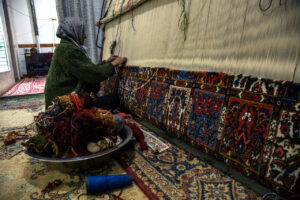
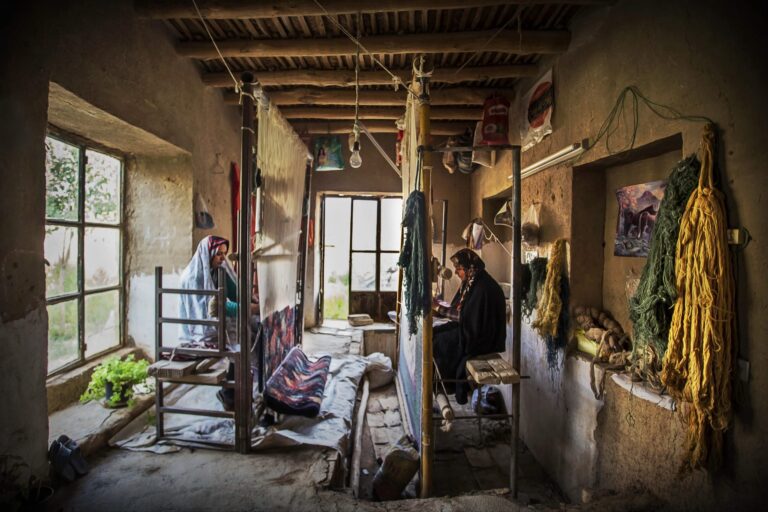
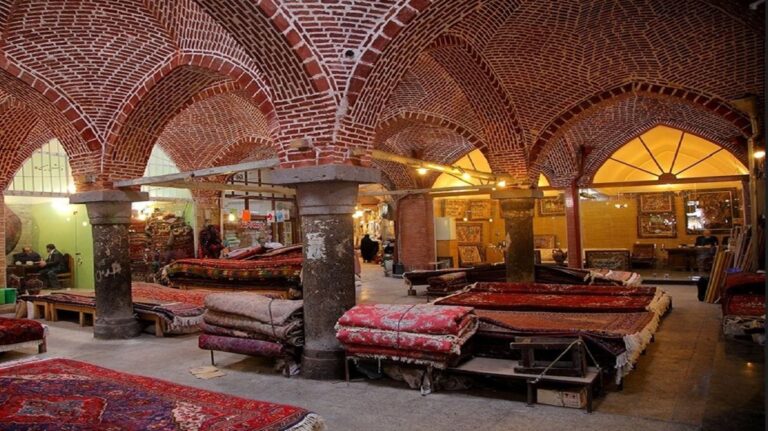
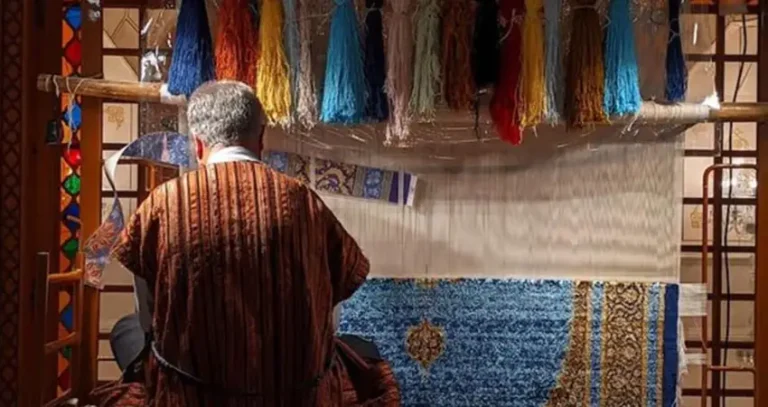
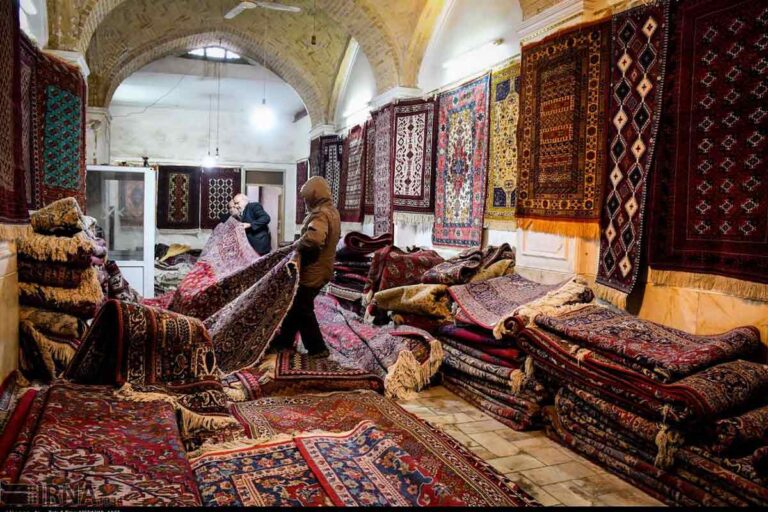
We bring you not just a carpet, but a masterpiece with a story — directly from the hands of Iranian artists to your home.
By working directly with artisans, we help preserve centuries-old traditions while offering our customers a chance to own a unique piece of original cultural heritage.